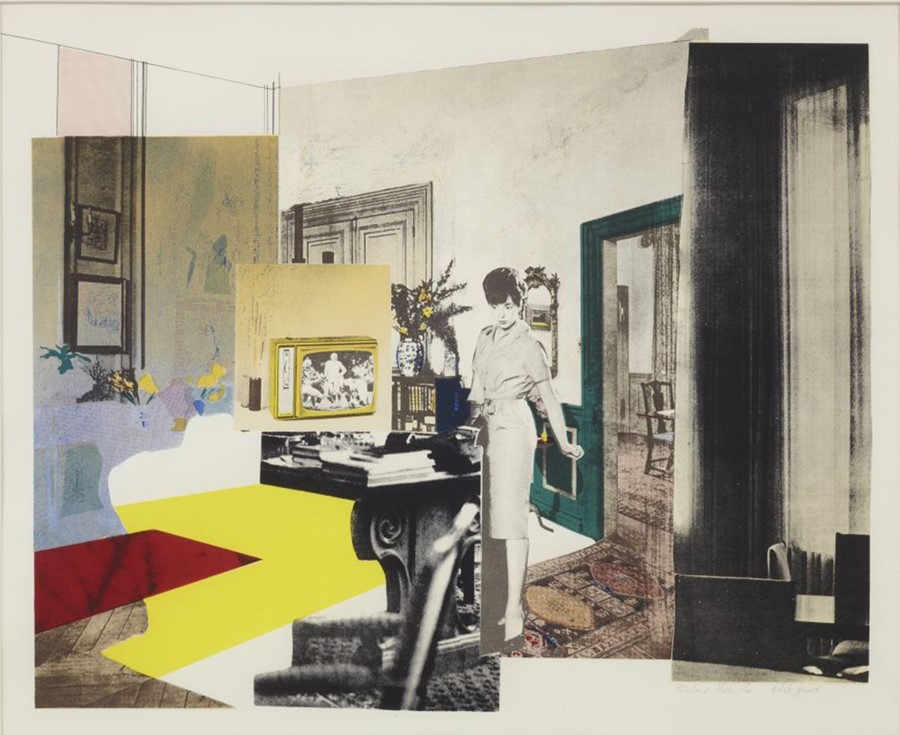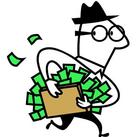
Contemporary art has a strong theme about appropriation. Sherrie levine, an artist who draws inspiration from many sources, often quotes entire works of art in her own work. Levine's work questions gender roles and creative ideas as well as consumerism and the social origins art. Richard Prince, another artist, has re-photographed famous photojournalist shots and billboard ads. They raise commercial images to new artistic levels.
Fair use
Appropriation art is a well-known form of art, but it can also be subject to copyright claims. Artists often use a work with minimal modifications and experiment with the results. However, the doctrines of fair use have been criticized as being a thin line. A work can only be considered fair if it is "transformative".

Recent case in which fair usage was denied in an appropriation dispute has led to a legal debate. In an amended decision, The United States Court of Appeals for Second Circuit ruled Andy Warhol’s photo in the "Prince Series” was an infringement of photographer's copyright. It also ruled that it was not fair to use the photo.
Reenactment
Reenactment as art of appropriation can be described as an artistic method that makes use of historical events or themes in order to create a new work. It is a form of transmedia storytelling that plays with concepts such as translation, authority, and resignification. It serves as a medium for memory and addresses difficult issues.
Cultural studies have been increasingly interested in the term "reenactment". This concept is becoming more important as it raises questions about memory and cultural transmission, cultural adaptation, and communities' ability to stage history. It can also be understood as an attempt to address the absence of selfdetermined histories. This is why artistic reenactment emerged as a form if cultural appropriation and an assertion to autonomy in the face a heteronomous past.
Reconstruction
A Reconstruction of Appropriation art explores the history of appropriation. The 1930s and works of Marcel Duchamp, Kurt Schwitters are the focus of the first period. The second period examines appropriation and North American art. Douglas Crimp is an artist who contrasts styles from 1980s art with those of 1990s. They view this as the beginning of an ongoing problem.

Artists of the 1990s and beyond often use appropriation in their art. Known as "appropriation art," it has spread beyond a single medium and has become a part of every field of art. Some see it simply as repurposing. But others see it more as re-editing "scripts" of culture.
FAQ
What are some positive features of pop culture?
Pop culture can be good. Pop culture can be used to spark conversation. Also, it helps people express their creativity. Pop culture can help artists promote their work.
In my opinion, the best thing about pop culture is that it brings people together. Everyone wants to see the same shows. Everyone loves the same music. People like the same movies. Pop culture allows us connect.
Problem is, not all pop culture has the same health benefits. For example, some films glorify violence. Some television programs make fun at people with mental disorders. And some bands encourage fans to do drugs.
So, what can we do with pop culture's negative side?
We should try not to allow pop culture to influence us. It shouldn't influence us. It can lead to problems in our health. It can lead to crime. It can even lead to a loss of love.
Pop culture can also be a source of help or harm to society. Does it promote good values? Are people being influenced to do bad things?
Let's not forget to ask ourselves if our world is fulfilling. What music do you like? The TV programs we watch What clothes do you wear?
If we care about our future, we must take responsibility for our actions. We must decide the world we want. We can then choose the right pop culture.
What are examples of pop culture in 2021?
Two hijacked planes crashed into the Twin Towers of New York City's World Trade Center on September 11, 2001. 9/11 was the day that would change history.
The events of this day have impacted popular culture and continue to do so today. It is easy to see how this event has impacted our lives in many different ways.
It includes TV shows like 24, and movies like United 93. This tells the story about what happened on the flight from Boston (Mass.) to Los Angeles (Calif.) on 9/11. You can also find books such as The Forever War, by Dexter Filkins.
We all remember where we were when we first heard about the attacks. Some people got up and went outside, while others read the newspapers or watched TV.
Pop culture is constantly evolving. Pop culture is a reflection of society and an inspiration. What will happen to popular culture in the next year? It's too early to tell. It will be completely different than the one before.
How did pop music get started?
It was accidental. The mistake that caused the first song to be written was when someone accidentally knocked a piano over while playing on New Years Eve 1920.
The recording company loved what they heard so they decided to release the single.
This was the first single to be recorded.
Pop music has been the most popular form today of musical entertainment.
What is pop culture of today?
Pop Culture is the art form of the 21st century. It includes all types of entertainment including music, film TV, videogames, fashion and advertising. In his 1985 book, Amusing Ourselves Too Death (1985), Neil Postman first coined this term. Pop refers to mass communication that uses formulaic and cheap tricks to create an illusion or spontaneity.
He did however point out that most people don't feel genuine enjoyment because they are trained to seek media experiences which make them feel superior. He also said that this kind of cultural expression contributed to the decline of critical thinking skills in young adults.
Pop culture has also been referred to as popular culture or consumerism.
What examples of pop culture are there in 2020?
The music industry is evolving rapidly. We saw artists like Travis Scott and Post Malone reach number 1 on Billboard’s Hot 100 chart. This was an incredible feat for any artist.
This is also true for streaming services. Spotify reported that they streamed 10 billion hours of audio content in the last year. It's 5x more than the content users were listening to five years ago.
This has caused a significant shift in media consumption. People now spend most of their time-consuming content rather than creating it.
Everyone, from toddlers to seniors, has an access point to high-quality audio content. Anyone can record, edit, mix and release their music.
To play your favorite song you don't have a degree in classical music theory. You can simply download an app, add your voice, and upload them to YouTube.
If you don't feel like making music, why not just watch? There are countless channels dedicated to making videos of songs ranging from covers to parodies.
How can we prevent the dangers of pop-culture?
We need to recognize when pop culture influences us. Next, we must be aware of when pop culture is influencing us and make sure we don't get influenced. Here are some ways to stay clear of bad influences.
-
Avoid watching Game Of Thrones and other violent shows.
-
Do not spend too much time on the Internet. Read books instead.
-
Watch less television. Spend your time doing something healthy.
-
Be cautious about what you write online. It is impossible to delete comments after they are posted.
-
You should ensure that all websites you visit are secure. Before you provide personal information, be sure to check them.
-
Don't let anyone pressure you into doing dangerous things.
Talk to an adult about if you think you might be addicted to pop culture. You can contact your local library, or the National Center For Missing & Exposed Children (1-800-583-LOL).
What is the popular music culture?
Popular Music Culture is a constantly-changing phenomenon that comes in many forms.
Popular music culture can be defined by its use certain types of music (e.g. rock, jazz) or lyrics. It also includes the impact of visual media such as television, fashion and advertising on artists' careers, as well as public perception.
It's also how fans interact and support their favorite artists.
One aspect of popular music culture is the rise of "superstars," artists who have achieved fame, fortune, and status for themselves.
These celebrities often transcend genres to become cultural icons. The evolution of popular culture has been influenced by their popularity.
Other elements of popular music culture include:
* The rise of recording technology - from acoustic instruments to electric guitars and microphones;
* Invention of the record player and radio
* The birth of the rock 'n roll era;
* The introduction TV and film
* The advent of MTV and VH1;
* The creation the internet.
Statistics
- Less than a decade later, that statistic rose to 90% (Dager, n.d.). (socialsci.libretexts.org)
- [17][18][19]Definition[edit]According to author John Storey, there are various definitions of popular culture. (en.wikipedia.org)
- In 1987, US films captured 56% of the European film market. (socialsci.libretexts.org)
- According to CNBC.com, “more than 70% of the film's revenue came from countries outside the US” (https://www.cnbc.com/2019/01/08/aqua...nal-sales.html, ret. 8/18/19). (socialsci.libretexts.org)
- Yet a Nielsen study shows they account for 42% of the country's most-watched content on streaming services. courtesy Nielsen (npr.org)
External Links
How To
What is pop culture and how does it relate to movies?
Popular Movies Culture involves all aspects of entertainment - including books, magazines, newspapers, television programs, websites, blogs, social media, apps, games, and more.
Movies can be divided into three types: comedy/dramatic, horror (action/aventure), fantasy, science fiction and romance.
Movie plots typically follow a predictable pattern of events that ends with a satisfying conclusion.
Films' success is dependent on how closely they follow this formula.
Some common plot points are:
-
A protagonist who must overcome obstacles to attain his/her goal.
-
An antagonist who opposes the protagonist throughout the film;
-
The protagonist must make a moral decision in a moral dilemma
-
The twist that ends all.
You may have to reevaluate the outline or concept of your story if it doesn't fit within one of these categories before you start writing.
The following questions will be of particular importance:
-
How do I establish my setting?
-
What do you think my protagonist wants?
-
Why should readers care about my story
-
Where is my story heading?
-
Who is my main character
-
Will there be any conflict?
-
What is the climax?
-
What is my resolution?
-
Is the ending happy?
-
Do I introduce new characters?
-
Do I have multiple settings in my story?
-
Do you have subplots?
-
Are there key themes?
-
Can I tell a complete story within just one chapter?
-
Are I effectively using dialogue?
-
Is it clear and concise in my language?
-
Is my vocabulary appropriate for the context?
-
Have I used an active voice over a passive one?
-
Are there any spelling errors?
-
Is my grammar correct?
-
Are there too many adverbs
-
Are there any other things I could do?
-
When I'm done editing, what is my first impression?
Your job is not only to write a good book but to get it published.